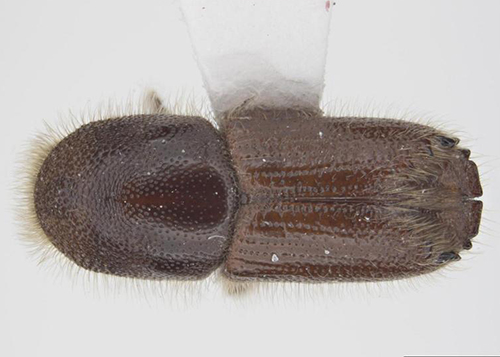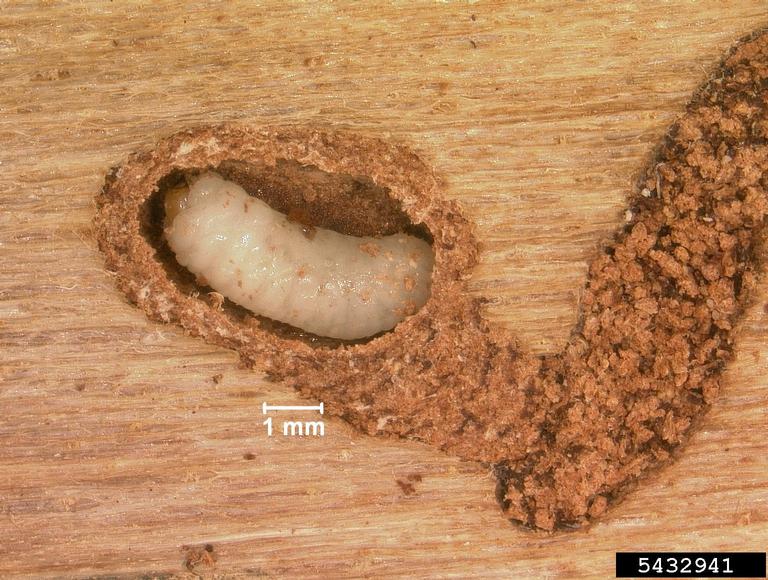Integrated Pest Management
Pinyon Ips
Pest Description
- adults: ~ 1/6 inch; reddish brown to black
- rear end of beetle is concave and surrounded by prominent spines
- larvae: white grubs with a brown head capsule; no legs
Host Plants, Diet & Damage
- two-leaf pinyon; single-leaf pinyon; other pinyons
- feed on tree phloem
- produce pitch tubes; sawdust-like frass
- kill trees systematically from the top down
- can introduce fungal pathogens
Biology, Life Cycle & Damaging Life Stage
- overwinter as adults under bark
- two and a half to three generations per year
- emerge in early spring with warming temperatures (warmer than 50 degrees F)
- males mate with multiple females creating diagnostic gallery pattern
larvae are the damaging life stage
IPM Recommendations
- Reduce stress and keep trees healthy and damage free.
- Irrigate pinyons during extended drought periods.
- Remove affected material and remove from site, or debark.
- Monitor nearby pine trees for signs of Ips attacks.
- If known populations are nearby, an insecticide (carbamate; pyrethroid) applied to the bark prior to beetle flight can protect trees.
For more information, see our Bark Beetles fact sheet.




